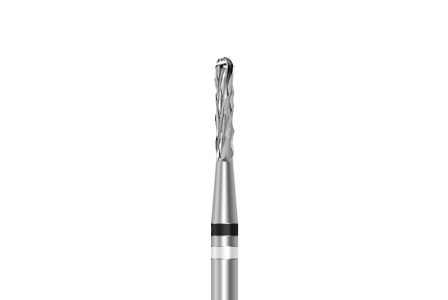Is there a difference between natural diamond Dental Burs and cheap synthetic Dental burs?
The primary difference between natural diamond burs and synthetic (or industrial) diamond burs lies in their origin and production processes.
- Natural Diamond Burs:
- Source: Natural diamond burs are made from diamonds that are mined from the earth. These diamonds are formed over millions of years through natural geological processes.
- Characteristics: Natural diamonds are known for their hardness and durability. They can be used in various industrial applications, including dentistry, due to their exceptional ability to cut through hard materials.
- Cost: Natural diamonds are typically more expensive than synthetic diamonds because of the scarcity and mining process.
- Synthetic Diamond Burs:
- Source: Synthetic diamond burs are created in a laboratory setting. They are produced using high-pressure, high-temperature (HPHT) or chemical vapor deposition (CVD) methods, where carbon is subjected to extreme conditions to form diamond crystals.
- Characteristics: Synthetic diamonds can be tailored to have specific properties, and they are designed to mimic the hardness of natural diamonds. They are widely used in various industrial applications, including dentistry.
- Cost: Generally, synthetic diamond burs are more cost-effective than natural diamond burs because they can be produced in a controlled environment.
In dentistry, both natural and synthetic diamond burs are used for cutting and shaping various materials, including tooth structure and dental restorative materials like ceramics. The choice between natural and synthetic diamond burs often depends on factors such as cost, availability, and the specific requirements of the dental procedure.
Dental professionals commonly use synthetic diamond burs because they can be manufactured with consistent quality and are more readily available at a lower cost compared to natural diamonds. However, advancements in synthetic diamond technology have made them highly suitable for dental applications. Always follow the manufacturer’s recommendations for the specific diamond burs used in dental procedures.
Some key points from natural diamond burs
Natural diamond burs are known for their effectiveness in various dental applications due to the inherent hardness and durability of natural diamonds. Here are some key points regarding the effectiveness of natural diamond burs in dentistry:
- Hardness: Natural diamonds are one of the hardest materials on Earth. This property makes diamond burs effective for cutting through hard substances encountered in dentistry, such as enamel, dentin, and certain dental materials.
- Durability: Natural diamond burs are durable and can maintain their cutting efficiency over extended periods of use. This durability is crucial in dental procedures where precision and consistency are essential.
- Sharpness: Natural diamonds can be cut and shaped to create extremely sharp edges, allowing for precise and fine cutting. This sharpness contributes to the effectiveness of diamond burs in achieving detailed dental work.
- Versatility: Natural diamond burs are versatile and can be used for various dental procedures, including cavity preparation, tooth shaping, and adjusting dental restorations.
- Material Compatibility: Diamond burs are effective for working with a variety of dental materials, including ceramics, composites, and certain metals. Their ability to cut through these materials makes them valuable in restorative and prosthetic dentistry.
- Minimal Heat Generation: When used correctly with proper cooling, natural diamond burs can generate less heat compared to some other cutting tools. This can be advantageous in dental procedures to minimize the risk of thermal damage to the tooth structure or dental materials.
- Consistency: Natural diamond burs can provide consistent cutting performance when properly cared for and used according to recommended guidelines.
Key Points from synthetic diamond burs
While synthetic diamond burs have become widely accepted and utilized in dentistry, there are some potential disadvantages associated with them. It’s important to note that these drawbacks may vary depending on the specific type of synthetic diamond bur, the manufacturing process, and the intended application. Here are some general points
- Variable Quality: The quality of synthetic diamond burs can vary among manufacturers. Inconsistencies in manufacturing processes or variations in diamond crystal quality may lead to differences in performance between different batches or brands.
- Heat Sensitivity: Some synthetic diamonds may be more sensitive to heat compared to natural diamonds. In dental procedures, excessive heat generation during cutting can potentially affect the performance and longevity of the synthetic diamond bur.
- Wear Resistance: While synthetic diamonds are generally hard, the wear resistance of some synthetic diamond burs may be lower compared to natural diamonds. This could result in a shorter lifespan for the bur, leading to more frequent replacements.
- Price Sensitivity: Although synthetic diamond burs are often more cost-effective than natural diamond burs, there may still be variations in price based on the quality and manufacturing processes. Some extremely high-quality synthetic diamond burs may approach the cost of natural diamond burs.
- Limited Size and Shape Options: The range of sizes and shapes available for synthetic diamond burs may be more limited compared to the extensive variety offered with natural diamond burs. This limitation could impact their suitability for specific dental procedures.
- Brittleness: Synthetic diamonds can be brittle, and in certain applications or with excessive force, there is a risk of chipping or fracturing. Proper technique and adherence to recommended guidelines are essential to minimize this risk.
- Environmental Impact of Production: The production of synthetic diamonds, especially through certain methods, can be energy-intensive and may have environmental implications. Dentists and dental laboratories concerned about the environmental impact may consider the manufacturing process of the synthetic diamond burs they use.



